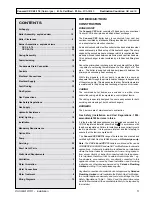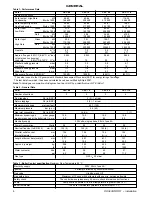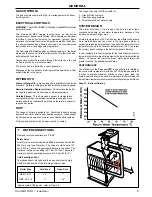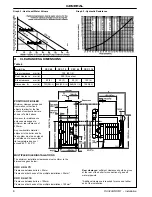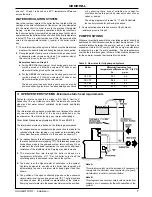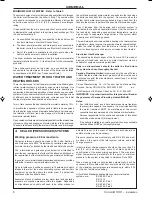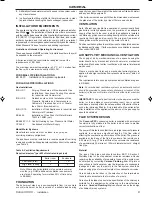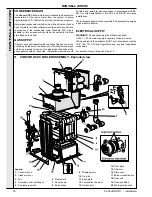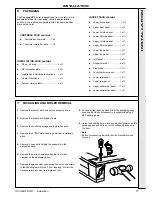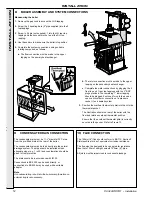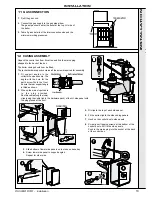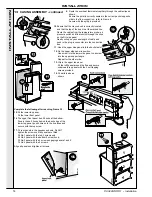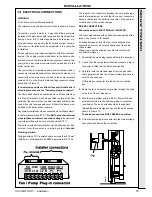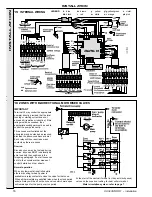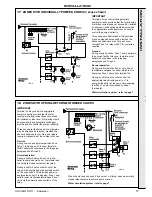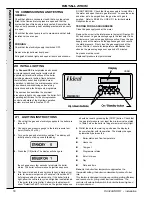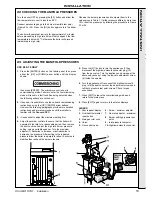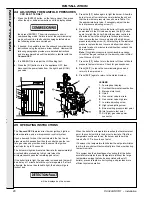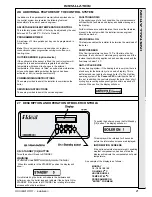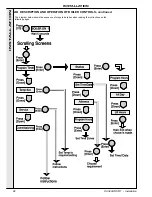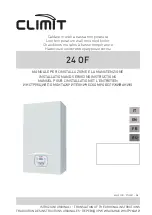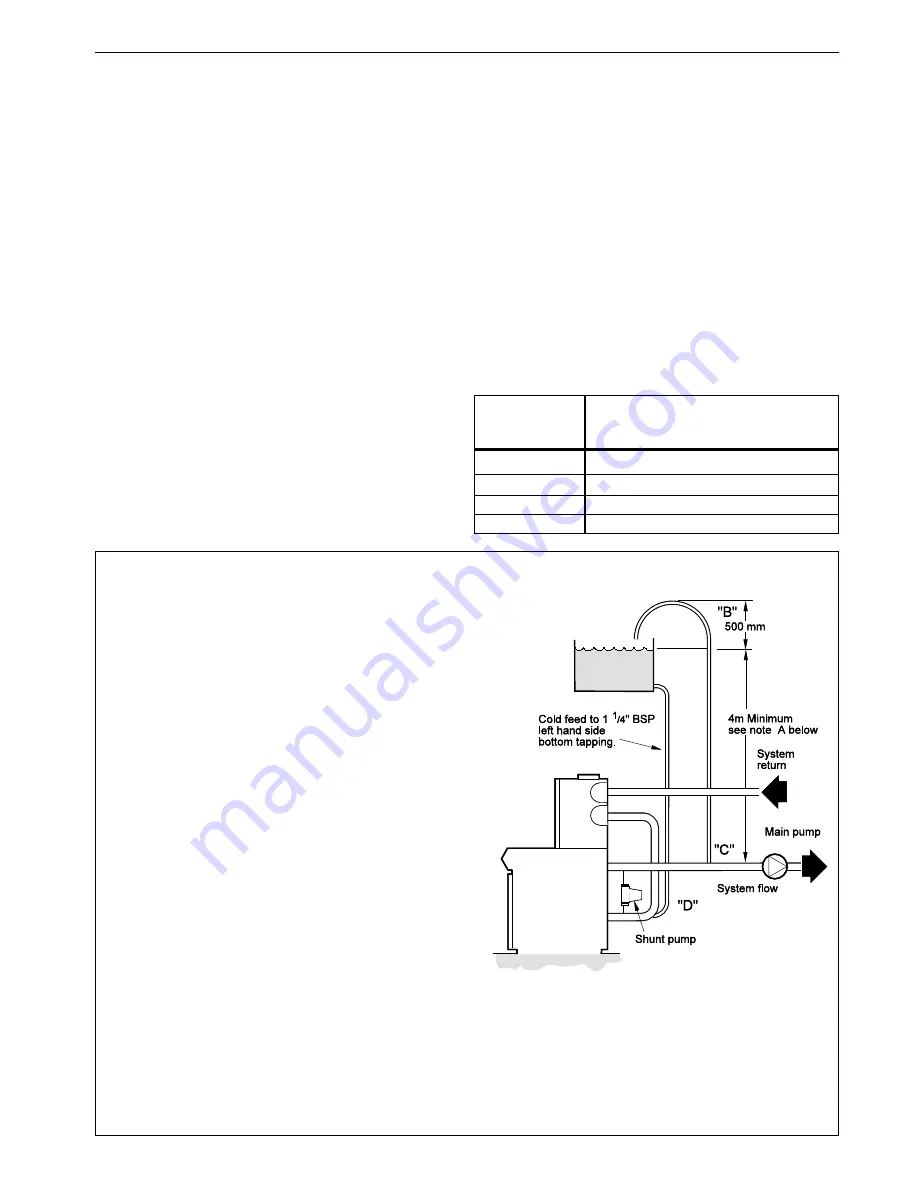
7
Concord CXC -
Installation
GENERAL
3 OPEN VENTED SYSTEMS - Minimum static head requirements
Note A.
This minimum height must be increased, if necessary, to
comply with the minimum head required by the pump
manufacturer in order to avoid cavitation.
Note B.
This diagram does not show safety valves, water flow
switches, etc., necessary for the safe operation of the
system.
Table 5 - Flow rates for fully pumped systems
Boiler
Minimum flow rates for a
temperature difference of 35
o
C (63
o
F)
l/s
g.p.m.
CXC 48
0.33
4.4
CXC 70
0.48
5.3
CXC 94
0.64
8.5
CXC 116
0.79
10.4
Particular reference should be made to BS. 6644: Section 2;
Subsection 10 and Guidance note PM5 "Automatically controlled
steam and hot water boilers" published by the Health and Safety
Executive.
The information and guidance given below is not intended to override
any requirements of either of the above publications or the
requirements of the local authority, gas or water undertakings.
Other British Standards applicable are BS.5422 and BS.6700.
The information provided is based on the following assumptions:
1. An independent open vent/safety pipe connection is made to the
redundant boiler flow tapping or is positioned immediately after
the system flow pipe connection to the header, as shown (C).
2. An independent cold feed/expansion pipe connection is made to
the redundant boiler return tapping ("D"). Cold feed/expansion pipe
connections made to the pumped system return will result in an
increase in the static head requirement, caused by the additional
resistance of the distributor tube. Surging may also increase.
3. The maximum flow rate through the boiler is based on a
temperature difference of 11°C at full boiler output and the
circulating pump is positioned in the flow to the system.
4. The boiler is at the highest point of circulation in the system.
Systems designed to rise above the boiler flow tappings will
automatically require a minimum static head higher than that
shown.
5. The position of the open vent/safety pipe above the expansion
cistern water level is given as a guide only ("B"). The final position
will depend upon the particular characteristics of the system.
Pumping over of water into the expansion cistern must be avoided.
and cost. Graph 1 is based on a 20°C temperature difference
across the boiler.
WATER CIRCULATION SYSTEM
Due to the compact nature of the boiler the heat stored within the
castings at the point of shutdown of the burner must be dissipated
into the water circuit in order to avoid the overheat thermostat
tripping. In order to allow pump operation after burner shutdown
the boiler control box incorporates a pump overrun facility which
operates when the boiler switches off and until the flow temperature
is below 75
0
C and, in order to make use of this, the pump must be
wired to the appropriate terminal L
2
(pump) in the boiler control
box.
1. The minimum flow rate as given in Table 5 must be maintained
whenever the boiler is firing and during the pump overrun period.
2. During the period of pump overrun there must be an open circuit
of adequate water volume and/or load. The minimum size of
this circuit is given by the use of Graph 2.
Examples shown on Graph 2
a. For the CXC 116 the minimum circuit during pump overrun
could be a load of 6 kW with a volume of 31 litres or any
other combination given by the relevant line.
b. For the CXC 94 the minimum circuit during pump overrun
could be a load of 2 kW with a volume of 45 litres or any
other combination given by the relevant line.
The above circuit capacity during pump overrun may be
achieved either by provision of an adequate bypass circuit
or by ensuring that a zone of suitable size is open for
circulation during this period by relevant control of zone
valves or pumps.
The wiring diagrams in Frames 16, 17 and 18 illustrate
the control methods for achieving the above.
3. Pump selection should take account of the hydraulic
resistance given in Graph 3.
PUMP POSITIONS
Whenever practically possible the circulating pump(s) should be
positioned so that it pressurises the system being served. The
vertical distance between the pump(s) and any cold feed and
expansion cistern MUST comply with the pump manufacturers
requirements in order to avoid cavitation. These requirements
override the information given in Frame 3 if the static head required
for the pump(s) exceeds that required for the boiler.
Summary of Contents for Concord CXC 116
Page 1: ......
Page 38: ...38 Concord CXC Installation NOTES ...



